YDROVALYS project
YDROVALYS research project is conducted by the laboratory of hydraulic machines of National Technical University of Athens with close collaboration with the pump manufacturer "Drakos-Polemis". The project focuses on the study and optimum design of a centrifugal pump for efficient operation as a turbine, in a hydroelectric system suitable for building, industrial and agricultural use.
The aim of the project is the development of a purposely designed pump to be operated as a turbine (Pump as Turbine, PAT) for electricity generation with a high efficiency, utilizing the low capital, operational and maintenance costs associated with centrifugal pumps.
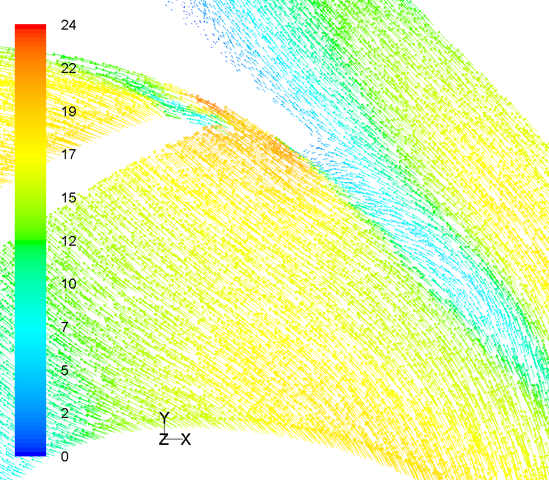 |
In the framework of the project, the initial design of the impeller was captured and digitized using CAD. Numerical simulations took place in pump operation as well as turbine operation using commercial CFD software and the results were compared to experimental data, showing good correlation
Subsequently, several design variations were investigated such as rounding of the blade leading edge, increasing the number of blades, introducing splitter blades and increasing of the impeller width. According to this study, a parametric design of the impeller/runner was developed and numerical optimization was performed aiming in the maximization of the hydraulic efficiency of the impeller/runner.
The final design obtained from the procedure described above was manufactured using additive manufacturing and tested in the laboratory using the initial spiral casing. In this way, the determination of the performnce curves in both pump and turbine operation of the old and new designs were obtained.
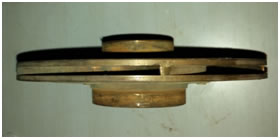
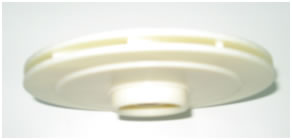
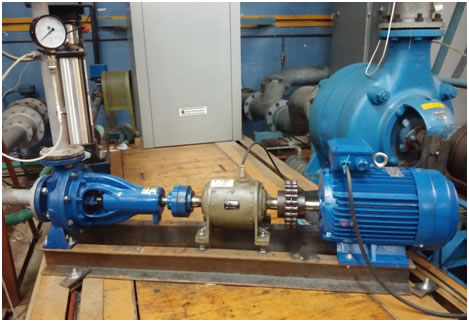
For the determination of the performance curves, the pressure differential between inlet and outlet, the flow, speed and torque on the turbine shaft were measured. The pump/turbine is connected to an asychronous motor using an elastic coupling and one chain coupling. Between the two a strain gauge torque meter is installed.
In order to cover a wide range of operating conditions without exceeding the allowable limits of the laboratory feed pumps as well as the power output of the motor, two asynchrounous motors were used: a high speed motor rated at 3000rpm and a slow speed rated at 750 rpm. The measurements of the slow motor were then scaled to 3000rpm using affinity laws.
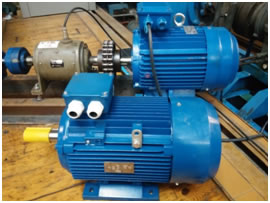
In total 8 measurement series were obtained for pump and turbine operation at 750 and 3000rpm using both the old and new impellers.
Comparing the performance curves with the numerical data, a good correlation can be observed. The new impeller showed approximately a 3% higher efficieny compared to the old desing.
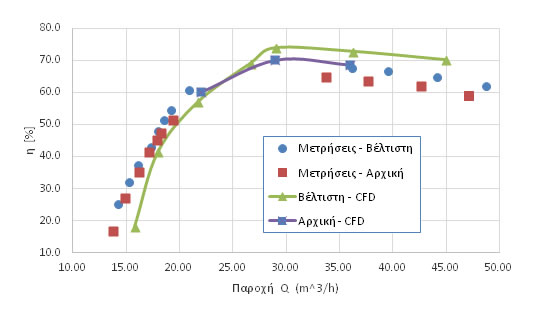
Finally, a parametric design method for spiral casings was developed. The designs that can be obtained from this method can be adjusted to the width and the inlet radius of the impeller ensuring optimium coopertion between components. As before, a design optimization study of the spiral casing was performed aiming in the minimization of hydraulic losses.
In the course of the project the following papers were published:
1. 13th International Conference of Numerical Analysis and Applied Mathematics (ICNAAM 2015)
2. International Review of Mechanical Engineering (IREME)
